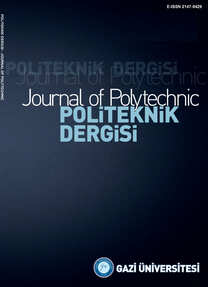3D Printing for Tissue Engineering Applications
Bioprinter, bioink, self-assembly, biomimicry, tissue engineering
3D Printing for Tissue Engineering Applications
Bioprinter, bioink, self-assembly, biomimicry, tissue engineering,
___
- [1] Ozbolat, I. T. & Yu, Y. “Bioprinting toward organ fabrication: challenges and future trends.” IEEE Trans. Biomed. Eng. 60:691–699 (2013).
- [2] Murphy, S. V. & Atala, A. “3D bioprinting of tissues and organs.” Nat. Biotechnol. 32: 773–785 (2014).
- [3] Derby, B. “Printing and Prototyping of Tissues and Scaffolds.” Science 338: 921–926 (2012).
- [4] McRobbie, D. W. “MRI from picture to proton.” Cambridge University Press, (2006).
- [5] Zhang, Y. S. et al. “3D Bioprinting for Tissue and Organ Fabrication.” Ann. Biomed. Eng. (2016).
- [6] Kang, H.-W. et al. “A 3D bioprinting system to produce human-scale tissue constructs with structural integrity.” Nat. Biotechnol. 34: 312–319 (2016).
- [7] Xu, T., Kincaid, H., Atala, A. & Yoo, J. J. “High-Throughput Production of Single-Cell Microparticles Using an Inkjet Printing Technology.” J. Manuf. Sci. Eng. 130: 21017 (2008).
- [8] Cui, X., Dean, D., Ruggeri, Z. M. & Boland, T. “Cell damage evaluation of thermal inkjet printed Chinese hamster ovary cells.” Biotechnol. Bioeng. 106: 963–969 (2010).
- [9] Tekin, E., Smith, P. J. & Schubert, U. S. “Inkjet printing as a deposition and patterning tool for polymers and inorganic particles.” Soft Matter 4, 703: (2008).
- [10] Cui, X., Boland, T., D D’Lima, D. & K Lotz, M. “Thermal inkjet printing in tissue engineering and regenerative medicine.” Recent Pat. Drug Deliv. Formul. 6: 149–155, (2012).
- [11] Kim, J. D., Choi, J. S., Kim, B. S., Chan Choi, Y. & Cho, Y. W. “Piezoelectric inkjet printing of polymers: Stem cell patterning on polymer substrates.” Polymer 51: 2147–2154, (2010).
- [12] Mironov, V., Boland, T., Trusk, T., Forgacs, G. & Markwald, R. R. “Organ printing: computer-aided jet-based 3D tissue engineering.” Trends Biotechnol. 21: 157–161, (2003).
- [13] Khalil, S., Nam, J. & Sun, W. “Multi-nozzle deposition for construction of 3D biopolymer tissue scaffolds.” Rapid Prototyp. J. 11: 9–17, (2005).
- [14] Ozbolat, I. T. & Hospodiuk, M. “Current advances and future perspectives in extrusion-based bioprinting.” Biomaterials, 76:321–343 (2016).
- [15] Visser, J. et al. “Biofabrication of multi-material anatomically shaped tissue constructs.” Biofabrication 5: 35007, (2013).
- [16] Delaporte, P. & Alloncle, A.-P. “Laser-induced forward transfer: A high resolution additive manufacturing technology.” Opt. Laser Technol. 78: 33–41 (2016).
- [17] Gruene, M. et al. “Laser Printing of Stem Cells for Biofabrication of Scaffold-Free Autologous Grafts.” Tissue Eng. Part C Methods 17: 79–87 (2011).
- [18] Guillemot, F., Souquet, A., Catros, S. & Guillotin, B. “Laser-assisted cell printing: principle, physical parameters versus cell fate and perspectives in tissue engineering.” Nanomed., 5: 507–515 (2010).
- [19] Carrow, J. K., Kerativitayanan, P., Jaiswal, M. K., Lokhande, G. & Gaharwar, A. K. in “Essentials of 3D Biofabrication and Translation” 229–248, (2015).
- [20] Irvine, S. & Venkatraman, S. “Bioprinting and Differentiation of Stem Cells.” Molecules 21: 1188 (2016).
- [21] Jakab, K. et al. “Tissue engineering by self-assembly and bio-printing of living cells.” Biofabrication 2: 22001 (2010).
- [22] Norotte, C., Marga, F. S., Niklason, L. E. & Forgacs, G. “Scaffold-free vascular tissue engineering using bioprinting.” Biomaterials 30: 5910–5917 (2009).
- [23] Patra, S. & Young, V. “A Review of 3D Printing Techniques and the Future in Biofabrication of Bioprinted Tissue.” Cell Biochem. Biophys. 74: 93–98 (2016).
- [24] Ozbolat, I. T. “Scaffold-based or scaffold-free bioprinting: competing or complementing approaches” J. Nanotechnol. Eng. Med. 6: 24701 (2015).
- [25] Tan, Y. et al. “3D printing facilitated scaffold-free tissue unit fabrication.” Biofabrication 6, 24111 (2014).
- [26] Yu, Y. et al. “Three-dimensional bioprinting using self-assembling scalable scaffold-free ‘tissue strands’ as a new bioink.” Sci. Rep. 6: 28714 (2016).
- [27] Pati, F. et al. “Printing three-dimensional tissue analogues with decellularized extracellular matrix bioink.” Nat. Commun. 5: (2014).
- [28] Binder, K. W., Allen, A. J., Yoo, J. J. & Atala, A. “Drop-On-Demand Inkjet Bioprinting: A Primer.” Gene Ther. Regul. 6: 33–49 (2011).
- ISSN: 1302-0900
- Yayın Aralığı: 6
- Başlangıç: 1998
- Yayıncı: GAZİ ÜNİVERSİTESİ
Reaktif Pudra Betonlarının Basınç Dayanımının ANFIS ile Tahmini
İLKER BEKİR TOPÇU, EYYÜP GÜLBANDILAR, Ahmet Burak KOCA
Onur YILMAZ, Catalina Natalia CHEABURU YILMAZ
Şekil Hafıza Davranışlarının Termodinamiği
ŞENER KARABULUT, ABİDİN ŞAHİNOĞLU
Kok Fırını Gazı ve Jeneratör Gazının Oksijence Zenginleştirilmiş Yanması: Sayısal Bir Çalışma
Mustafa İLBAŞ, Esat YANIK, SERHAT KARYEYEN
Evalution Bandwidth of Optical Signal via Statistical Moments of Random Phase Screen
Miranda KHAJISHVILI, Nugzar GOMIDZE, Izolda JABNIDZE, Kakha MAKHARADZE, Manana CHIKHLADZE
ONUR YILMAZ, Catalina Natalia CHEABURU YILMAZ
Ezgi GÜNAY, MUSTAFA YURDAKUL, Yusuf Tansel İÇ, Hacı Veli MIZRAK, SERKAN GÜNEŞ
Pore Characterization of Volcanic Tuffs Used as Building Stone in Afyonkarahisar (Turkey)
